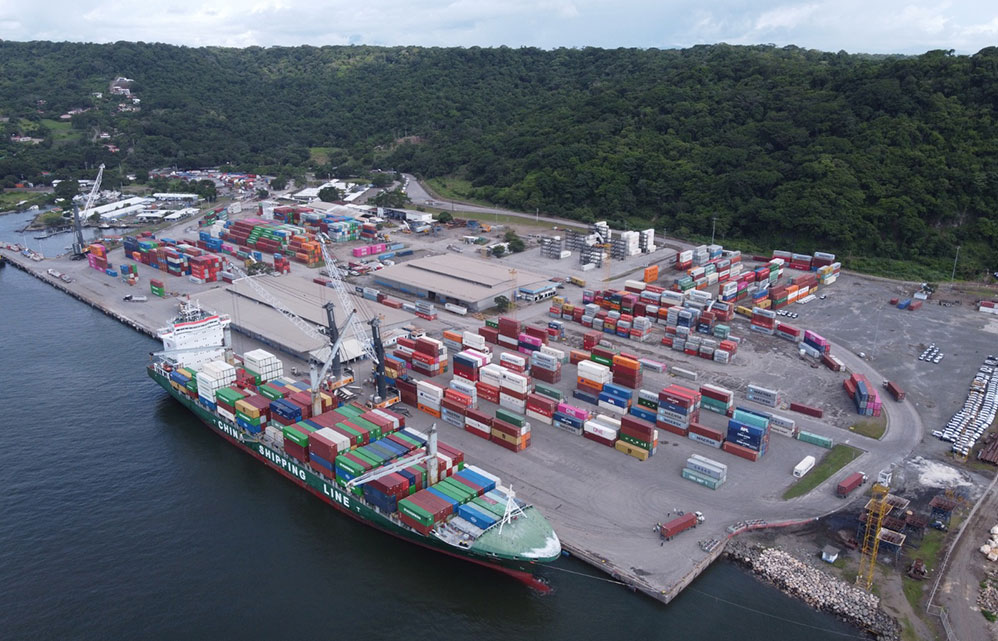Puerto Caldera closed in 2024 with over 6.3 million tons transferred, highlighting the urgency of its modernization

- The main products that entered last year were cereals, fertilizers, iron, and vehicles.
- To continue advancing, it is necessary to modernize the facilities to increase the terminal’s productivity and competitiveness to support Costa Rica’s foreign trade.
- In 2024, SPC invested ₡2,612 billion in infrastructure, equipment, and training.
- Among the transferred tons, 3.1 million tons were moved in containers and 2.4 million tons in grains.
Caldera, Costa Rica. February 2025 | Sociedad Portuaria de Caldera (SPC) and Sociedad Portuaria Granelera de Caldera (SPGC) presented a positive balance of their operations during 2024, with over 6.3 million tons of cargo transferred, 638 dockings, and the unloading of 50,000 vehicles. These results reflect the strategic role of the port as the main one on the Costa Rican Pacific and its impact on the national economy.
The port continues to be a key pillar in job creation, with more than 1,000 direct and 6,000 indirect jobs, consolidating the logistics chain and supporting Costa Rica’s foreign trade. Thanks to the joint effort between employees, transporters, clients, and suppliers, SPC has managed to face the challenges of daily operations and respond to the growing demands of international trade.
In 2024, SPC made an investment of ₡2,612 billion in infrastructure, equipment, and training, which allowed the implementation of new operational techniques and training programs for its employees. However, the occupancy levels at the port have reached historical figures, highlighting the need to modernize the infrastructure to ensure its long-term sustainability.
“The investments made in the last 18 years have been key to the continuity and evolution of operations at the port, even in the face of current challenges. Thanks to the commitment of our employees and uninterrupted 24/7 service, we managed to handle an 11% growth in container volume and a 20% increase in general cargo compared to the previous year. This has been possible through implementing new operational techniques, a continuous training program, and close coordination with private sector users, allowing us to face climatic and infrastructure challenges successfully,” said Ricardo Ospina, general manager of SPC.
Last year, the port faced one of the worst winters the country has recorded and still managed the largest operation of containers and general cargo, mainly moving products such as iron, wood, cereals, fertilizers, vehicles, and heavy machinery.
Commitment to the country’s economic development
The port’s current capacity faces increasing pressure due to the lack of adequate infrastructure to meet the demand of Costa Ricans. Therefore, SPC has continued implementing decongestion strategies and has invested in initiatives such as training more than 300 employees through the BEST Program, which has focused on continuous improvement, workplace safety, and process excellence.
This effort by the concessionaire and its employees was recognized with the 2024 Mature Level Business Excellence Award, granted by the Costa Rican Chamber of Industries. Additionally, cleaning and tree planting days were held at Playa Caldera in support of the community, and 2024 ended with 117 stevedores trained at the Stevedore Academy, which seeks to promote an effective culture of continuous improvement principles and the commitment of the port’s various suppliers to operational excellence.
During the previous year, SPC contributed ₡5,312 billion to the State in fees, ₡4,175 billion in taxes, and ₡1,659 billion to comply with the Regulatory Law of Port Activity of the Pacific Coast. Additionally, it invested ₡2,612 billion in infrastructure, equipment, and training for a total benefit to the Costa Rican State of more than ₡13 billion last year.
SPC reiterated that the port urgently needs modernization to efficiently respond to the increase in trade and strengthen the country’s competitiveness. “The modernization of Puerto Caldera’s infrastructure is crucial to improve its operational capacity, reduce waiting times, and strengthen support for Costa Rica’s export and import sectors. These improvements will impact the port and drive the economic development of Puntarenas and the country in general,” said Ospina.
In 2025, Sociedad Portuaria de Caldera reaffirms its commitment to sustainable growth, collaborative work with stakeholders, and working 24/7 to drive Costa Rica’s economic development and ensure that Puerto Caldera remains a key gateway for international trade.

